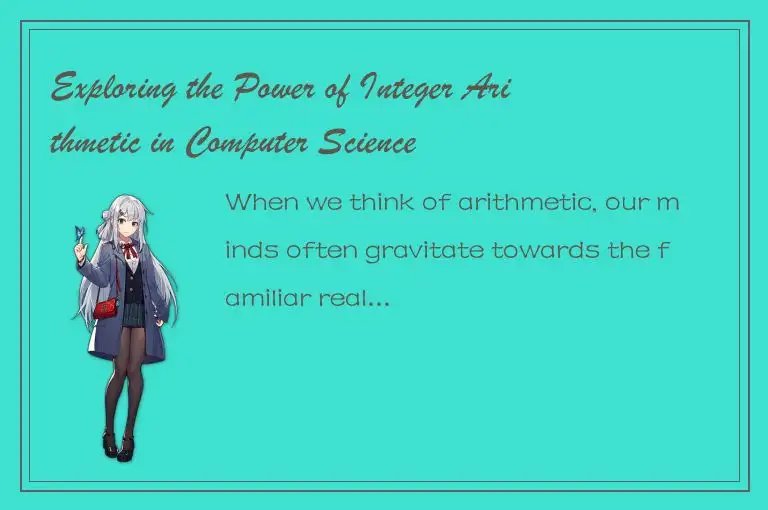When we think of arithmetic, our minds often gravitate towards the familiar realms of addition, subtraction, multiplication, and division. However, in computer science, integer arithmetic takes on a whole new level of importance and power. In this article, we will explore the role of integer arithmetic in computer science, its significance, and some of the most popular applications of integer arithmetic.

Understanding Integers
An integer is a whole number that can be negative or positive. Integers do not have any decimal or fractional values. For example, -5, 0, and 10 are all integers. In computer science, integers are represented in binary form as a string of 0s and 1s. The length of the binary string varies with the size of the integer; for example, the integer 5 could be represented as 101 in binary.
Why are Integers Important in Computer Science?
Integers are a cornerstone of computer programming. They are used in a wide variety of applications, from basic arithmetic calculations to the encryption algorithms that help keep our data secure. One of the reasons why integers are so important in computer science is because they are used to represent many real-life concepts. For example, integers can be used to represent the number of items in a shopping cart, the number of pixels in an image, and the number of seconds in a time interval.
Integers are also integral to a lot of programming algorithms. When algorithms are designed to sort a list of data items, integers are often used to index the items in the list. Similarly, when algorithms need to traverse trees or graphs, integers are used to keep track of the nodes and vertices of the structure.
Applications of Integer Arithmetic
1. Cryptography
Integer arithmetic is essential to modern cryptography. Cryptography is the art of designing secure communication systems, and it relies heavily on the power of large prime numbers, which are integers that can only be evenly divided by 1 and themselves. Cryptographic functions such as RSA encryption and digital signatures rely on large prime numbers to encrypt and decrypt data.
2. Computer Graphics
Computer graphics heavily rely on integer arithmetic. Pixels, which are the smallest unit of an image, are defined as an ordered pair of integers that represent the coordinates of the pixel on the screen. Image processing and graphics algorithms such as edge detection, filtering, and transformations also use integer arithmetic to manipulate images.
3. Data Compression
Integer arithmetic is useful in data compression, which is the process of reducing the amount of space required to store or transmit data. Techniques such as Huffman code, which is used to compress text data, use integer arithmetic to calculate frequencies and probabilities of characters in the text.
4. Game Development
Integer arithmetic plays a vital role in game development. Many games rely on the position of game objects, which are represented as integer values on a virtual grid. Game engines also use integer arithmetic extensively for collision detection and pathfinding algorithms.
Limitations of Integer Arithmetic
While integer arithmetic is a powerful tool in computer science, it does have its limitations. One of the significant limitations is the range of values that integer data types can represent. For example, a 32-bit integer can only represent values between -2,147,483,648 and 2,147,483,647. When calculations exceed these values, programmers need to use larger data types such as 64-bit or 128-bit integers.
Another limitation of integer arithmetic is the potential for overflow and underflow errors. When calculations result in values beyond the maximum or minimum limit of a data type, the result will overflow or underflow. This can result in incorrect computations and unexpected behavior in programs.
Conclusion
In conclusion, integer arithmetic is a powerful tool used extensively in computer science. Its widespread applications in cryptography, computer graphics, data compression, and game development speak to its importance. However, it is crucial to keep in mind the limitations of integer arithmetic, such as the range of values it can represent and potential overflow and underflow errors. Understanding the power and limitations of integer arithmetic is essential to designing robust and efficient programs in various fields.




 QQ客服专员
QQ客服专员 电话客服专员
电话客服专员